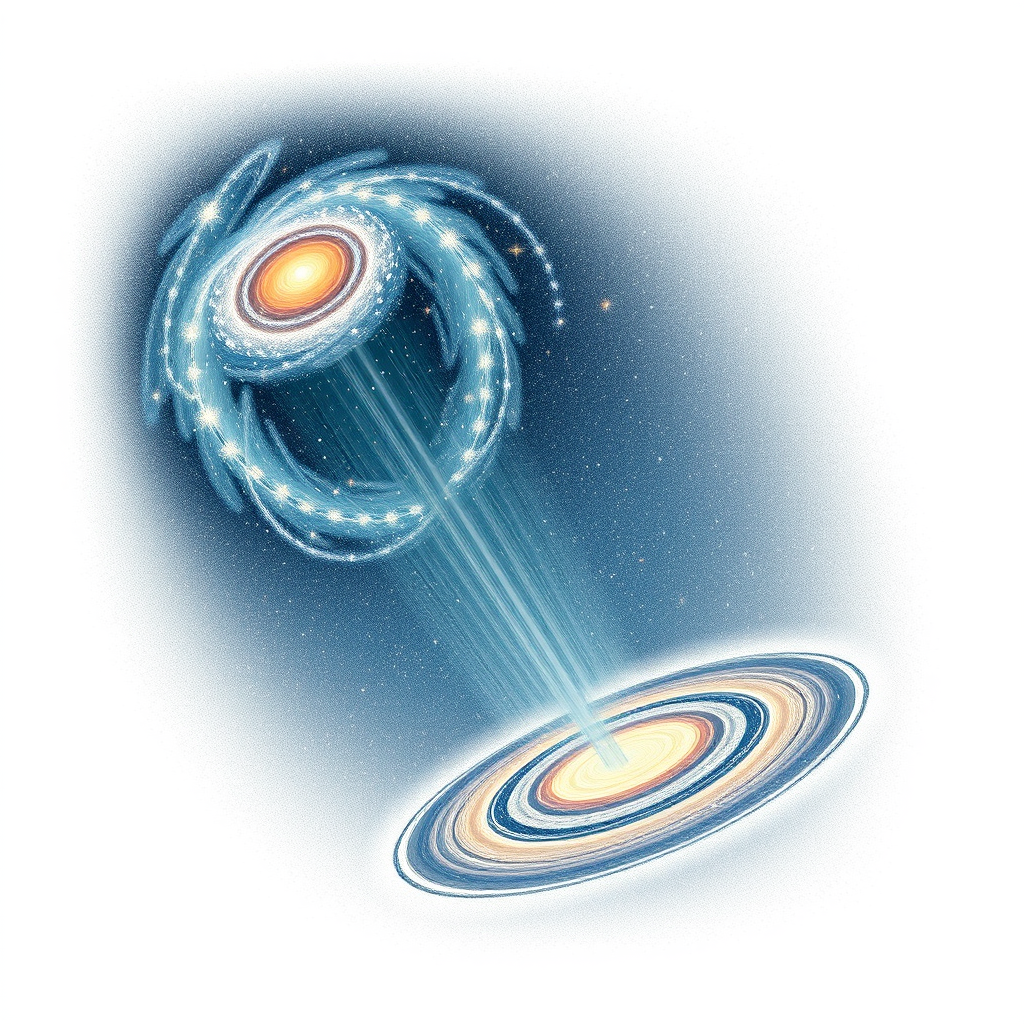Neighboring Galaxy Ripped Apart by Gravitational Forces

A nearby galaxy is undergoing a dramatic disruption, according to a new study revealing the Small Magellanic Cloud (SMC) is being torn apart by the gravitational forces of its larger companion, the Large Magellanic Cloud (LMC). Published in The Astrophysical Journal Supplement Series, the research, based on data from the European Space Agency’s Gaia spacecraft, paints a picture of a galactic dance gone awry.
Astronomers, led by Kengo Tachihara of Nagoya University, discovered stars within the SMC are moving in opposing directions, indicating a powerful stretching force. “When we first saw the results, we suspected an error,” Tachihara explained. “But closer examination confirmed the findings – the SMC is being pulled apart.”
The study also revealed a surprising lack of rotation among the SMC’s massive stars. This challenges existing models of galactic evolution and suggests our understanding of the SMC’s mass and its interactions with the Milky Way and LMC may be incomplete. A lack of rotation could fundamentally alter previously calculated histories of these galactic interactions.
Located roughly 200,000 light-years away, the SMC is a dwarf galaxy orbiting our own Milky Way. While significantly smaller – just 7,000 light-years across compared to the Milky Way’s 100,000 light-year diameter – the SMC is remarkably bright, visible to the naked eye from the Southern Hemisphere. This proximity and brightness make it a crucial laboratory for studying galactic processes difficult to observe in more distant galaxies.
The SMC, along with the LMC, is one of approximately 30 galaxies within our cosmic neighborhood. Its orbital period around the Milky Way is a lengthy 1.5 billion years.
This research is particularly compelling because it offers a rare opportunity to observe galactic dynamics in detail. As Tachihara notes, we lack the external perspective needed to study our own galaxy effectively. The SMC and LMC, therefore, provide invaluable insights into star formation and galactic evolution. The gradual destruction of the SMC, while a dramatic event, is a natural consequence of galactic interactions and offers a unique window into the forces shaping the universe around us. It’s a stark reminder that even seemingly stable galactic structures are subject to constant change and disruption.